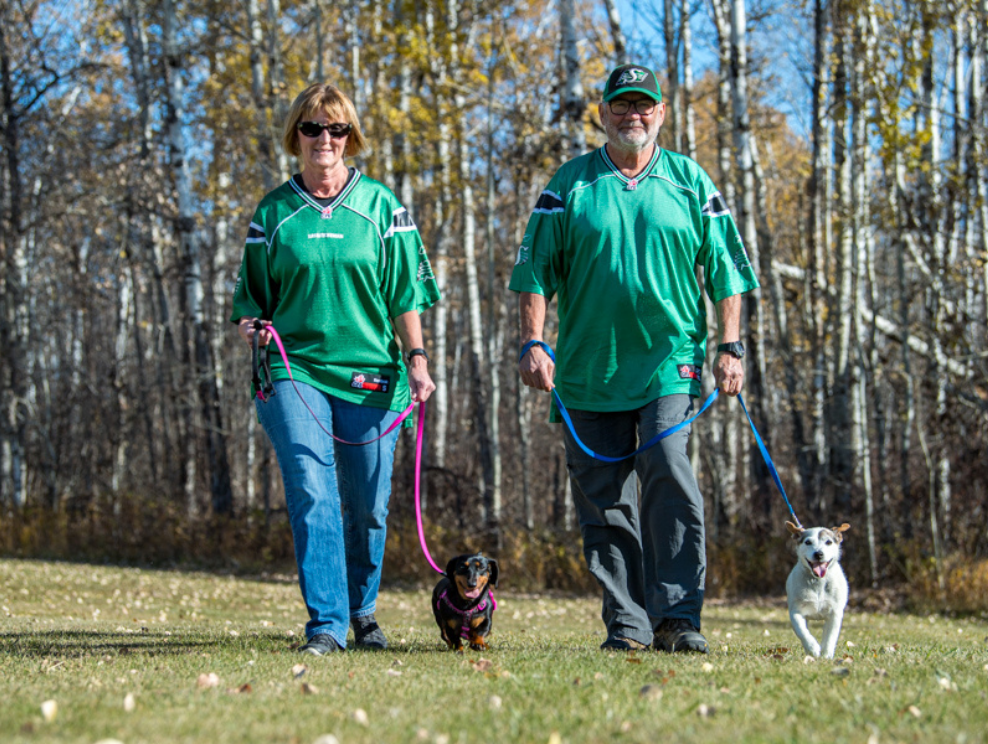At age 70, Ottawa’s Pierre-Yves Bourduas has become something of a life-long student of the impact that movement, exercise and weight training can have on an aging body. He’s devoured books such as Younger Next Year: Live Strong, Fit, Sexy, and Smart ― Until You’re 80 and Beyond and Outlive: The Science and Art of Longevity.

"I celebrated the 10th anniversary of my 60th birthday last year," Bourduas cheekily says, couching his age in math. "When I was younger, I was short and chubby. I started lifting weights and swimming, and improving my physical condition became a priority."
Fitness remained important as he found his calling with the RCMP, eventually retiring as deputy commissioner. And now, as a federal retiree, he’s reaping the benefits of a regular fitness regime. Throughout, hockey has been an important part of his life. Only now, instead of using hockey to stay in shape, he stays in shape to play hockey. Because it’s a fast game, he credits it with keeping his mind sharp as well. He’s particularly proud of sharing the game with his 46-year-old son and 15-year-old grandson, who have been known to share the ice together. And during the summer, he enjoys playing tennis. That’s in addition to his workout regime, which centres around 90-minute weight-training sessions every other day.
Seniors are increasingly seeing the advantages of movement as they enjoy their retirement years. In fact, even just pinning down Larry and Sheryl Busser for a conversation is a challenge. Both are members of Federal Retirees — he’s 73 and she’s 66. When they’re not hiking through Haida Gwaii or some other destination, they’re active on their home turf.
“We try to exercise every day for our own well-being,” Sheryl says.
They see the benefits that movement has had for them, including weight management, improved balance and co-ordination, joint and muscle relief and improved sleep.
“We really noticed this during COVID. We were all in quarantine and getting outside and exercising was our lifeline,” Sheryl says. “We live in a rural area so, of course, that also made it easier to get outside and have personal space and exercise.”

Larry volunteers for a small local bike club near their Prince Albert, Sask., home, grooming the trails for fat biking, which he rides as well. The couple also snowshoes on the trails to pack them down for the bikes. During the winter, he uses his bike trainer indoors and Sheryl does a variety of stretching and strengthening routines and walks every day.
The Canadian Society for Exercise Physiology (CSEP) promotes its Canadian 24-hour movement guidelines geared to help seniors stay strong, mentally fit and independent. At their core, the guidelines encourage increased movement, reduced sedentary time and a getting a good night’s sleep.
The guidelines suggest a range of physical activities in a variety of environments and contexts across all seasons. Its authors note that the benefits far exceed potential harms and that keeping active is beneficial to health, including a lower risk of mortality and cognitive function.
A study published in the Canadian Medical Association Journal in January concludes that 150 minutes of moderate physical activity per week can reduce all-cause mortality by 31 per cent compared with no physical activity.
"We’re living longer and healthier lives. Fifty years ago, life expectancy was in the late 60s, but now it's in the early 80s,” says Samir K. Sinha, geriatrician and clinician scientist at the Sinai Health System and University Health Network, who co-authored the study with Jane S. Thornton and William N. Morley. “[Despite this] we still face increased risks of conditions like sarcopenia and osteoporosis, where bones become more brittle. That’s where exercise is helpful.”
Exercise is key to maintaining function, flexibility and agility as we age, Sinha says. Walking is a great way to get moving and increase the heart rate and one of the best forms of exercise for maintaining mobility and overall health. Even those with heart conditions, he adds, can benefit from physical exercise.
You can start now
It’s never too late to start. Sinha suggests starting small and working up over time to achieve that goal of 150 minutes of exercise every week.
The greater levels of inactivity as we age, either self-imposed, due to a health concern or a lack of motivation can impact our overall health, he stresses.
Ed Harper has long known the benefits, having used his running shoes and then his bike as something of a time machine. The 94-year-old former member of Parliament for Barrie, Ont., credits the bike with helping him stay young. Throughout his retirement, Harper had been using his self-propelled machine — even in the winter. And in 2022 and 2023, he rode the 75-kilometre Toronto route in Baycrest Bike for Brain Health.
“I was big on exercise right from when I was in public school,” says Harper, who served as the only Reform MP east of Manitoba from 1993 to 1997. “When I was in Ottawa, I’d get up early in the morning, do a jog and then go to the House.
“Whatever success I’ve had is because I’ve looked after my body through exercising.”
He has slowed down the past couple of years and finally bought an e-bike last fall, so he could get some help going up hills. But he still plans to do his favourite ride along the rail trail to Orillia, an 80-kilometre round trip.
And he still walks two or three kilometres every day, often stopping at the one-kilometre point to take a rest. In whatever form it takes, Harper vows to remain active.
For his part, Bourduas is satisfied that he’s developed a regime to help him achieve his goals of staying fit, healthy and on the ball. "When you get to your 60s and 70s, people often notice your physical appearance and lifestyle,” he says. “I’ve developed friendships, but I don’t preach. I just try to project a healthy image, and people can come to their own conclusions.”
His goal, ultimately, is to live longer in retirement than in his working life.
